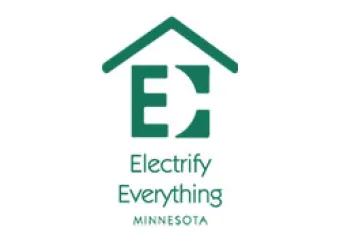Rod Fisher in Eden Prairie has progressively taken steps to electrify his home. We sat down with him to learn about his process. Answers have been condensed for clarity and brevity.
Home Details
- Built: 1976
- Size: 2,200 square feet
- Location: Eden Prairie, Minnesota
- Utility:
- Electric: Xcel Energy
- Gas: CenterPoint Energy
Questions and Answers with Rod
Question: Why did you want to electrify your home?
Rod: I’m interested in technology and seeing how these things can help with climate change. That’s my main reason: Getting gas out of the houses. We’re willing and able to pay a little more up front for the technology and know that it will save money in the long run.
I’m an engineer. Being a tech guy, I’m just curious about all of this. I got an energy audit five to six years ago. That showed us areas of the home with air leaks and heat loss. So I bought bats of insulation and put them up in the ceiling. I also sealed a bunch of leaks. It was a noticeable change. The audit highlighted our gas water heater, so that also seemed like a good project.
Because I had a pretty high score from my audit, and especially after sealing up the leaks that I could, I felt ready to go after the electrification stuff.
Question: What projects have you completed in your home?
Rod: We installed an electric dryer in 2018. Two years later, we upgraded the electric panel when we bought a plug-in hybrid electric car. This increased our electrical capacity from 100 to 200 amps, which opened space for other equipment too. In 2021, we put in a heat pump water heater. We installed a Sense Home Energy Monitor in the panel so we can track appliance energy use. Tracking the data is so cool.
Question: Your home is part of a utility program that may roll out to other homes in the future. Can you describe that?
Rod: In 2020, we were invited to join the utility’s time-of-use pilot, which set three different prices for electricity throughout the day. We found we could program electric appliances to run when the electricity prices were lower and save money. We’re saving money partially because of the pilot program but also because the equipment is more efficient.
Question: How would you describe the installation and use of the electric appliances?
Rod: Upgrading the electrical box was easy. Any electrician will do that.
The heat pump dryer was also super easy. I went to Best Buy, bought the dryer, plugged it in, and sealed up my vent. The dryer is interesting to us because it is very energy efficient and so quiet.
Another benefit is that it allowed us to close up the outside vent thereby eliminating some of the heat leaving the house and no more risk of creatures coming into the house. It’s a nice compact unit, and it’s programmable, which means we can use electricity when it’s cheap.
I installed the water heater myself. We’ve not run out of hot water and haven’t needed to use the electric resistance element, which means it’s always on heat pump mode. It is also easy to program. I have a nice interface on my phone for it. We set the water heater to run when electricity is cheaper too.
Question: What are you looking at next?
Rod: It’s encouraging to know how easy it is to learn about this stuff.
Rewiring America and Electrify Everything Minnesota are putting out these awesome educational resources specifically. That’s really cool.
We’ve gotten bids on ground source heat pumps and air source heat pumps. The prices we’ve seen for the air source heat pumps have been more attractive for us.
With the IRA funding coming out soon, we hope to take advantage of that for an air source heat pump project.
Equipment Details
- Heat Pump Water Heater
- Size: 50 gallons
- Brand: Richmond
- Purchased: Menards
- Heat Pump Clothes Dryer
- Size: 4 cubic feet
- Brand: Miele
- Purchased: Best Buy
- Electrical Panel
- Size: 200 amps
Answer Your Electrification Questions
As a self-proclaimed tech guy, Rod was interested in how technology could help him get gas out of his home. Using the results of a home energy audit, Rod was able to plan for and upgrade multiple pieces of equipment in his 1976 home. If you’re interested in electrification but aren’t sure where to start, consider getting your own home energy audit for tailored guidance on how to make the switch.
